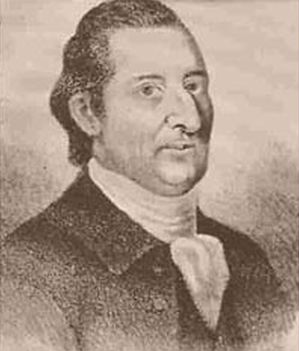
The concept of having a national postal service was the brainchild of a Revolutionary Patriot printer named Wiliam Goddard, who was dissatisfied with the unreliable service provided by the Royal Postal Service. Goddard laid out a plan for the “Constitutional Post” before the Continental Congress on October 5, 1774. Congress did not act upon the plan until after the Battle of Lexington and Concord on April 19, 1775. Benjamin Franklin advanced Goddard’s plan and was subsequently appointed as the first postmaster general under the Continental Congress beginning on July 26, 1775.
While postmaster, Franklin established properly-surveyed and marked routes from Maine to Florida, instituted overnight postal service between New York and Philadelphia, and developed a standardized rate chart based upon weight and distance.
The Postal Service Act signed into law by President George Washington on February 20, 1792, established the United States Post Office Department.
Because news was considered crucial to an informed electorate, the 1792 law distributed newspapers to subscribers for 1 penny up to 100 miles and 1.5 cents over 100 miles. Printers could send their newspapers to other newspaper publishers for free. This cheap rate was subsidized by the cost of sending a letter, which was between 6 and 25 cents depending on the distance.
Author/historian JD Thomas said the Postal Service Act was created by the desire to avoid censorship utilized by the British Crown to try to suppress their political opponents in colonial times. He also claimed that “the promise of mail delivery helped grow the nation and economy instead of serving only existing communities.” Historians have postulated that the widespread availability of newspapers contributed to a high literacy rate in the United States which led to an increased rate of economic growth.
The current financial problems plaguing the postal service began in the 1960s. Rates were very low, and the volume of mail was increasing. The postal system could not keep up with the volume; at one point there was a backlog of 10 million pieces of mail at the Chicago post office.
Postal employees were becoming increasingly unhappy with their wages. Postal Unions kept asking congress for a raise in salary, but to no avail. Federal law precludes a strike, however, disgruntled and frustrated, the postal workers went on strike anyway.
Nixon called in the National Guard to deliver mail. The President wanted to reform the post office to alleviate the problems leading to the backlogs and delays, and the Strike gave him and Congress the opportunity to implement the perceived needed changes.
In 1970 the President signed into the law the “Postal Reorganization Act.” The Unions got their raise and the right to enter into collective bargaining. In exchange, they agreed to a monumental metamorphosis. The post office was transformed from a Cabinet Department into a quasi-private business, which was called the “United States Postal Service.”
The “Post Office Department” made money from postage but received appropriations from Congress comprising 25 percent of their operating budget. The “United States Postal Service” was mandated to be a self-sustaining business.
The newly formed entity kept all physical assets of the post office and the exclusive right to deliver stamped mail. There were stipulations in the law such as keeping the six-day delivery schedule, delivering mail to every address in the country, and obtaining permission to increase rates, offer a new service, or implement changes such as closing facilities.
Essentially, a business model was set up, but with mandated caveats that would later lead to problems.
Electronic communication has greatly eroded the volume of first-class mail in the last 20 years. First-class mail volume peaked in the U.S. at 103 billion letters a year in 2001, down to slightly more than 54 billion letters a year in 2019. The 1970 business model was dependent upon a high volume of money-making first class mail. Cash flow dwindled and the postal service incurred an increasing amount of debt.
In 2006 Congress passed the Postal Accountability and Enhancement Act. The act was both a blessing and a curse. Although the postal service could set their own rates for packages, first-class mail was indexed to inflation. There was a requirement slipped in at the last minute by the Republicans in Congress that mandated the Postal Service prepay all its workers’ retirement health benefits. At the time no government agency and very few businesses engaged in this practice.
Starting in 2007, the Postal Service had 10 years to amass this enormous sum of money for millions of current and former employees. This meant an already struggling organization was forced to set aside 5 billion dollars a year. The post office paid this amount until 2011 when it simply could not afford to continue payments. Other expenses such as pensions and worker’s compensation put the postal service deeper into debt. In 2019 this debt was $161 billion dollars. To put that in perspective, that is more double the income from the postal service in 2019.
If the Postal Service was actually a company, it could declare bankruptcy, reorganize, and negotiate with its workers. However, the Postal Service, as we now know it, is in essence, a hamstrung hybrid created by Congress.











